Prefoldin complex promotes interferon-stimulated gene expression and is inhibited by rotavirus VP3
- PMID: 40883306
- PMCID: PMC12397275
- DOI: 10.1038/s41467-025-63393-3
Prefoldin complex promotes interferon-stimulated gene expression and is inhibited by rotavirus VP3
Abstract
Timely induction of interferons and interferon-stimulated genes (ISGs) is critical for successful host defense against viral infections. VP3 encoded by rotavirus is implicated in interferon antagonism. However, the precise mechanisms remain incompletely understood. By conducting tandem-affinity purification coupled with high-resolution mass spectrometry, we identify the prefoldin complex as the top cellular binding partner of VP3. Rotavirus infection is significantly enhanced in prefoldin subunit knockout cells. Using proteome-wide label-free quantification, we find that prefoldin assists in folding ubiquitin-like-modifier-activating-enzyme-3 (UBA3), both of which positively regulate ISG expression. Through direct and competitive binding, VP3 interferes with the chaperone activity of prefoldin, leading to unstable UBA3, reduces IRF9, and suppresses ISG transcription. Our findings report a novel function of a prefoldin-UBA3-IRF9-ISG axis in antiviral immunity and uncover new aspects of virus-host interactions that could be exploited for broad-spectrum antiviral therapeutic development.
© 2025. The Author(s).
Conflict of interest statement
Competing interests: The authors declare no competing interests.
Figures
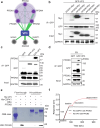
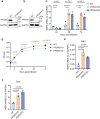

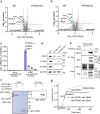
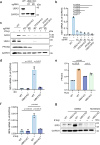
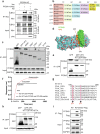

Similar articles
-
A rotavirus VP4 or VP7 monoreassortant panel identifies genotypes that are less susceptible to neutralization by systemic antibodies induced by vaccination or natural infection.mBio. 2025 Jul 9;16(7):e0089725. doi: 10.1128/mbio.00897-25. Epub 2025 May 30. mBio. 2025. PMID: 40444468 Free PMC article.
-
DEAD-box RNA helicase 10 inhibits porcine circovirus type 3 replication by interacting with the viral capsid protein and activating interferon responses.J Virol. 2025 Jun 17;99(6):e0057625. doi: 10.1128/jvi.00576-25. Epub 2025 May 9. J Virol. 2025. PMID: 40340395 Free PMC article.
-
Interferon-stimulated gene MCL1 inhibits foot-and-mouth disease virus replication by modulating mitochondrial dynamics and autophagy.J Virol. 2025 Jul 22;99(7):e0058125. doi: 10.1128/jvi.00581-25. Epub 2025 Jun 4. J Virol. 2025. PMID: 40464580 Free PMC article.
-
Chasing Virus Replication and Infection: PAMP-PRR Interaction Drives Type I Interferon Production, Which in Turn Activates ISG Expression and ISGylation.Viruses. 2025 Apr 4;17(4):528. doi: 10.3390/v17040528. Viruses. 2025. PMID: 40284971 Free PMC article. Review.
-
Working in negative space: Type I interferon mediated immuno-modulation through transcriptional suppression in disease and homeostasis.Innate Immun. 2025 Jan-Dec;31:17534259251367263. doi: 10.1177/17534259251367263. Epub 2025 Aug 18. Innate Immun. 2025. PMID: 40827030 Free PMC article. Review.
References
-
- Simons, C. T. et al. Selective contribution of eukaryotic prefoldin subunits to actin and tubulin binding. J. Biol. Chem.279, 4196–4203 (2004). - PubMed
-
- Balchin, D., Milicic, G., Strauss, M., Hayer-Hartl, M. & Hartl, F. U. Pathway of Actin Folding Directed by the Eukaryotic Chaperonin TRiC. Cell174, 1507–1521.e1516 (2018). - PubMed
MeSH terms
Substances
Grants and funding
LinkOut - more resources
Full Text Sources

